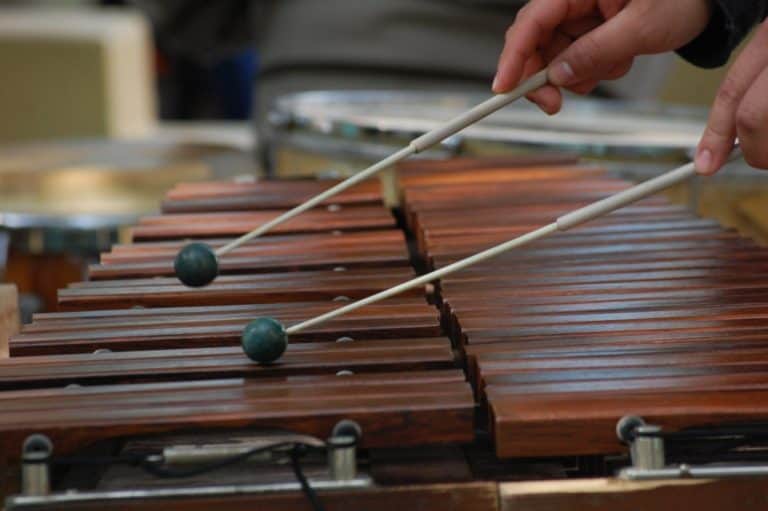Which Percussion Mallet for Which Instrument? | Examples
The term percussion mallet can be used to describe a wide variety of sticks used to play a musical instrument. This article will focus on which mallet for which instrument and some recommendations.
What is a Mallet in percussion? – Percussion mallets are generally described as any implement used to strike a percussion instrument for the purpose of generating a desired sound. Made up of a stick and a head, they differ from drumsticks in that they have a larger head that is often made out of a different material than the stick, itself.
The difference in the material that the head is made of, changes the sound that is produced by the instrument. In fact, there are several types of percussion mallets that have been designed for specific instruments for the purpose of generating the desired sound from that instrument. Instead of using a xylophone mallet to play a marimba, marimba mallets are used due to their unique design and the specific sound that they produce.
Below I look at the best and most popular mallets available and review the best types of mallets to be used with specific instruments.
What Are the Best Percussion Mallets?
I consider the Vic Firth American Custom Timpani Mallets to be the best percussion mallets for the majority of percussionists. While not the top seller in the world, they do rank in the top 3 and consistently receive five-star ratings by consumers.
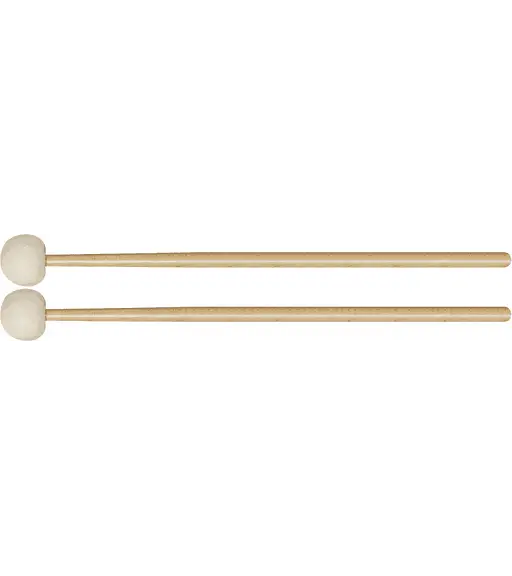
In addition, they are relatively cheap. Overall, these would be considered to be the best percussion mallets for the majority of percussionists. [Check the current price on Amazon]
While it seems like a simple enough question, what qualifies a mallet to be the best tool for a percussionist is often the percussionist’s own preference. Depending on the sound that they desire, the range of their instrument, and the way they play, a percussionist’s preference can range greatly.
Some other percussion mallets that are popular in the industry are listed below:
Promark MT3 Multi-Purpose Felt Mallet
[Check current price on Amazon] Consistently rated as one of the best all-purpose percussion mallets available
Shappy Bell Mallets Glockenspiel Sticks
[Check current price on Amazon] Currently ranked as the #1 best seller on Amazon, these glockenspiel mallets are one of the most popular models available, and come at a very reasonable price. However, be aware that what you are getting is good value if not the best quality, if you compare directly against the Timber Drum Co products, you will be disappointed. So….
Timber Drum Co. T2HP
[Check Current price on Amazon] These hard polymer mallets maintain a higher overall rating than the Shappy Bell Mallets at an almost equal price. The reason? They are incredibly durable. I would recommend a softer head if you play a wooden tongue drum.
Yolyoo Medium Hard Yarn Head Keyboard Marimba Mallets
[Check current price on Amazon] Best used while playing the marimba, these are the most popular yarn head mallets available. With good length birch handles.
What Are Percussion Mallets Made Of?
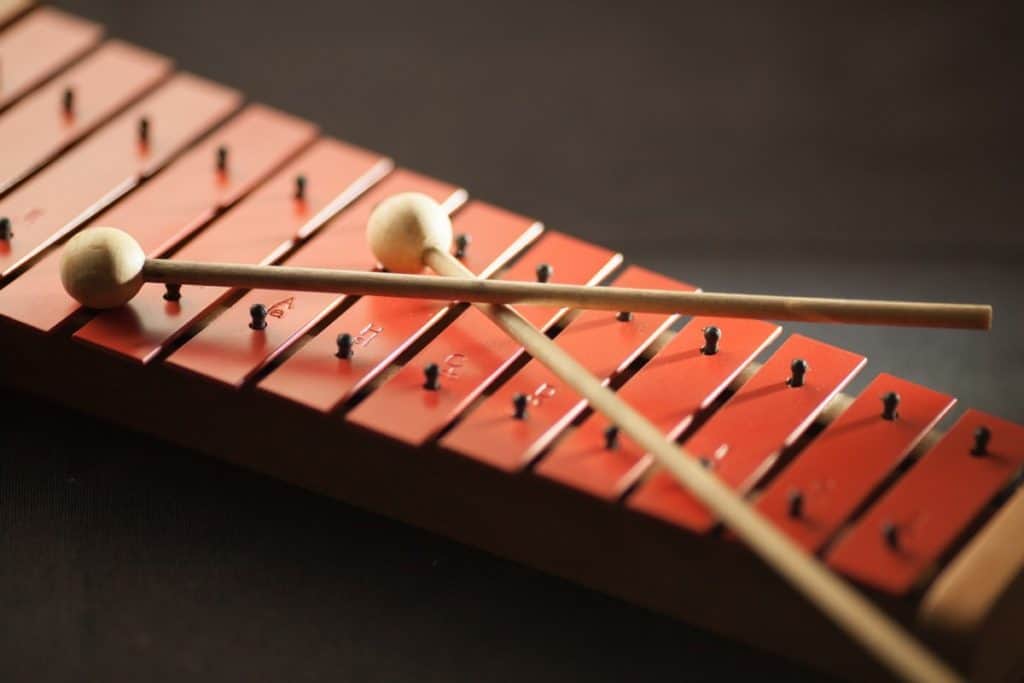
Mallets are made up of two different parts: A stick and a head. These two parts come in a variety of materials and can impact the sound that is generated simply by changing the material of either the stick or the head.
The stick is the simplest part of the mallet and is usually made of specific types of wood or thick vine, such as rattan, birch, or maple. They may also be made of less-natural products, such as fiberglass.
For the head of the mallet, there are three main types:
Unwrapped Mallets
Unwrapped mallets are the type that is generally used on more durable instruments, such as the glockenspiel or xylophone. This is due to the hardness of the material of these heads. They can be made using hard rubber, wood, brass, acrylic, and other hard materials designed to strike clean, clear notes on solid keys.
Wrapped Mallets
Wrapped mallets have heads that are made of rubber, nylon, or acrylic, which are then wrapped in softer materials, such as yarn or latex. These softer mallets are primarily used with instruments that are less durable, including the marimba and the vibraphone. However, they may also be used on more durable instruments to provide a more muffled sound when the keys are struck.
Felt or Cartwheel Mallets
Felt mallets or cartwheel mallets are most commonly used to play the timpani. The heads are made up of several layers of felt stacked on top of one washer, while a second washer sits on the top of the head to hold the felt in place.
What Mallets to use on a Xylophone?
The type of mallet you choose will determine the type of sound that your instrument produces, and the way in which your instrument can be used. For example, if you find yourself playing in a large ensemble, it becomes increasingly important for your sound to correspond with the sound that the other instruments are playing.
When considering mallets for use with the xylophone it is important to note one of the key differences between the xylophone and the other percussion instruments in this article:
Xylophone keys produce a strict staccato response and do not tend to have ongoing resonance past the first strike. This means that the mallet type should be focused only on producing that initial sound and you should not be overly concerned with the different resonance patterns the mallet can produce.
For the xylophone, mallets tend to be made of more durable materials that are designed to strike hard and clear, however, even with these harder materials there is a range of softness to hardness that impacts the sound of the instrument.
Mallet heads that are made of plastic or wood tend to generate louder and brighter tones when striking the wooden keys of a xylophone. In addition to these bright tones, wood on wood simply has a unique sound to it that can add a truly inspired sound to a piece, or can feel so out of place that the piece is made worse for it.
For a warmer, rounded tone, you can use a mallet that is made with a softer head, such as rubber. Wooden heads can also be used in this way if the head has been designed with a large surface area to produce a full rounded sound.
Therefore, before deciding on a specific sound, ensure that you have listened to the piece and that you are confident that the type of sound generated is appropriate for the specific arrangement.
What Mallets to use on a Glockenspiel?
Glockenspiels, like xylophones, are generally played using mallets that have harder, more durable heads. They can be made out of plastic, brass, aluminum, or a number of other harder materials that are perfect for striking the metal keys.
To choose the correct mallet for your piece, you must consider the material of the mallet head, the size of the mallet head, and the role of the glockenspiel in the arrangement.
Harder heads like the brass or aluminum heads produce a strong, clear sound that will often stand out in an arrangement due to the high frequency of the instrument. Medium-hard heads, such as the poly or rubber heads, will allow the glockenspiel to blend more carefully with the other instruments in a piece. So, depending on whether you need your instrument to stick or blend, the type of mallet required will shift.
The size of the head will also impact the sound that your glockenspiel produces. A small head produces a sharper, thinner tone, while a larger head will produce a fuller tone from the key.
What Mallets to use on a Marimba?
Marimbas require the use of wrapped mallets. In most cases, marimba mallets are made with yarn that has been wrapped and glued to a shaft, however, they can also be made using cord in place of the yarn.
Yarn mallet heads tend to be softer and are generally recommended for playing the marimba so that the rosewood bars are protected. Yarn mallet heads come in varying degrees of softness to hardness, but for most pieces a medium hardness yarn head is appropriate.
The medium hardness allows for the higher ranges of the marimba to be played, producing a softer sound, and it allows for the lower ranges to be played without worrying about damage to the bars. If more articulation is necessary, a soft cord mallet can be used in the lower range.
The weight of the entire mallet and the hardness of the core should also be taken into account. This includes the head and the shaft of the mallet, which can differ significantly depending on the yarn, the mallet’s shaft, and the core of the mallet. Heavier mallets will produce darker sounds, while harder cores create brighter sounds.
What Mallets To Use on a Vibraphone?
Similar to the marimba, the vibraphone tends to used wrapped mallets, however, where the marimba almost always uses yarn heads, it is recommended that cord heads are used for the vibraphone. This difference is due to the material that vibraphone keys are made out of. The metal keys or bars have a higher likelihood of damaging yarn-wrapped mallets, which will impact the quality of sound that the vibraphone produces.
The hardness of the head is primarily decided by the ensemble or piece that is being played. For large ensembles or pieces where the vibraphone must stand out, it is better to use hard cord mallets. When you are playing in smaller groups, you can choose between a hard cord head that will produce a bright, sharp sound, or a soft cord for a more tied-together sound.
The medium-hard heads can also be used to produce consistent, clear tones that blend easily in smaller groups. Take the time to find out exactly how, where, and with whom you will be playing before deciding on the best mallet to use on your vibraphone.
Mallets for Handpan?
There are certainly players that use mallets when playing a handpan. This is not something I would ever want to do, due to the fragile nature of the note fields on a handpan.
Handpans have the name for a reason, they are played with the hands, full stop. That’s not to say they do not make a great sound with a mallet, but it’s not for me. For more information on handpan, take a look at my dedicated handpan section.
Mallets for Tongue Drums?
Now you are talking. The majority of tongue drums are far hardier in the tone field area and can take consistent and repeated playing use with soft mallets. Indeed, many tongue drums come supplied with mallets like the one on my recommended tongue drum page.

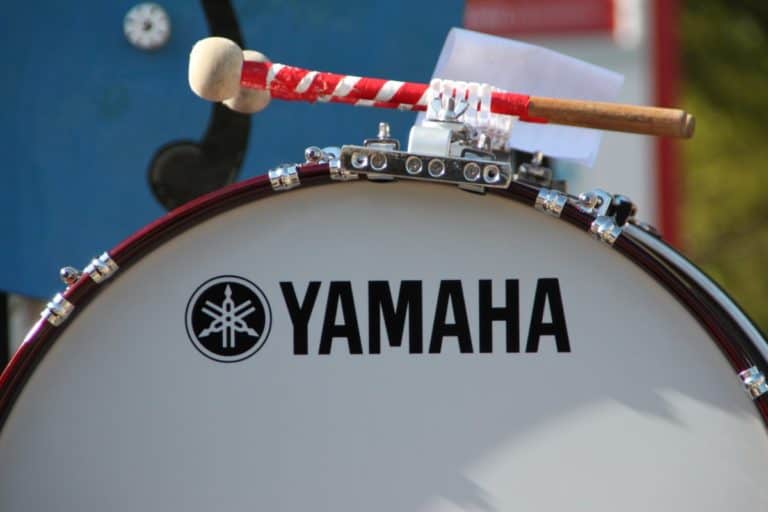
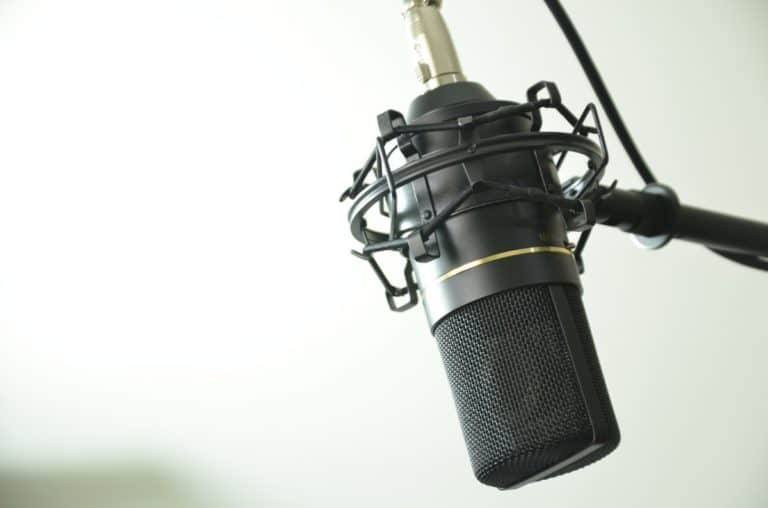
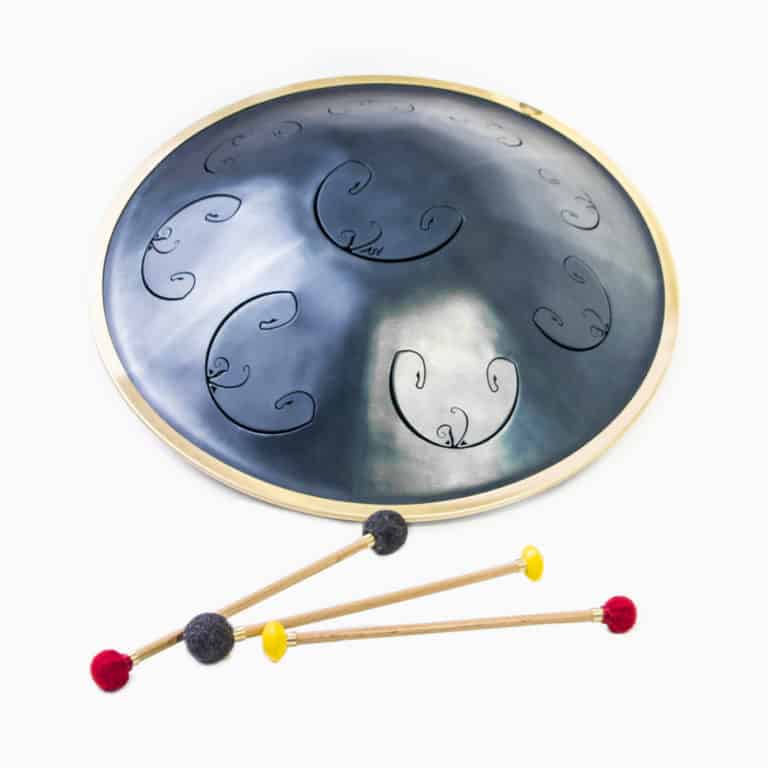
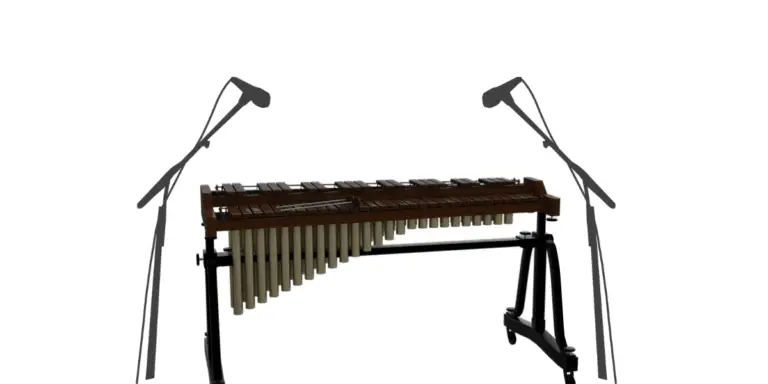
![Best Percussion Instruments For Kids [That you can play too]](https://cdn-0.coolpercussion.com/wp-content/uploads/2020/09/woman-4010110_1920-768x512.jpg)
